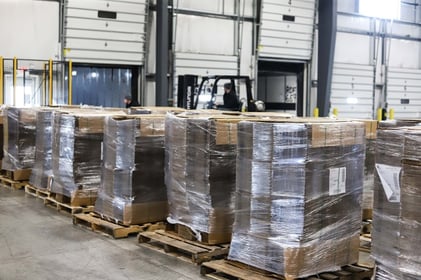 Envision a skid being shipped from Boston to Miami. Prior to the 1,502-mile trek, the skid was improperly packaged sustaining damage resulting in a claim. Have you ever received a skid that didn’t look the way it was supposed to when it was delivered?
Envision a skid being shipped from Boston to Miami. Prior to the 1,502-mile trek, the skid was improperly packaged sustaining damage resulting in a claim. Have you ever received a skid that didn’t look the way it was supposed to when it was delivered?
If yes, the optimal words “damage” and “claim” creates a real hassle for your supply chain. Typical causes for freight claims can be anywhere from damaged product, contamination, or lost freight. Whether you are shipping outbound or receiving inbound freight there are a few easy steps to prevent freight claims.
Proper Packaging
The packaging process reduces claims with preparation and consistency. The cost of materials to package the contents of the shipment are minimal in comparison to the entire product cost and transportation expenses. Cutting corners in the short-term creates damaged product, increased claims, and unnecessary time spent settling a claim.
A helpful tip is utilizing containers and boxes in proper conditions as well as providing plenty of cushioning around your product. For example, with some commodities it is important to use foam sheets or cardboard inserts inside the container, or wrapping each item separately to mitigate the risk of damaged freight.
The arrangement of the product on the pallet is an essential component to reducing damaged freight. If pallets are securely fastened, stacked uniformly and evenly distributed for boxed shipments it reduces the probability of a claim. A few best practices to avoid damages are: aligning products so they are uniformly stacked on the pallet to eliminate over hang, properly securing multiple boxes into place with shrink wrap, plastic banding, or a breakaway adhesive. The consistent implementation of quality packaging standards creates a streamlined freight flow and reduces overall damages.
Proper Labeling
The process of correctly labeling the bill of lading (BOL) section decreases the likelihood of future claims. Special instructions should be listed in the BOL. Ensuring a BOL accurately describes the characteristics of a shipment, can reduce chances of error. If shipments contain any hazardous materials, the shipment should comply with the CFR 49. The following are examples of proper labeling depending on the shipment:
- Do not double stack
- Top load only
- Protect from freeze
These labels should be placed on the BOL and outer packaging to minimize shipment confusion. This creates clear visibility of labeling and/or handling instructions.
Not All Carriers Are Created Equal
Selecting the best carrier can directly impact your claims ratio. Not all carriers are created equal. Some carriers are much better at handling certain types of freight than others. It is important to be sure the carriers you are working with are aligned with your service level expectations.
Selecting a 3PL partner that understands supply chain intelligence helps organizations make confident transportation decisions. The utilization of carrier scorecards provides insights on different carrier options and how they perform with carrier performance levels. These tools empower users to choose the best carrier, at the best time, at the best price.
The Take Away
Freight damages can cut deep into an organization’s profits. Take the time to make small proactive adjustments to your shipping processes. By providing quality shipping services it plays a pivotal role in a positive client experience.
If this is an area you are struggling with, find an experienced partner to help you navigate the unknown of freight damages.
